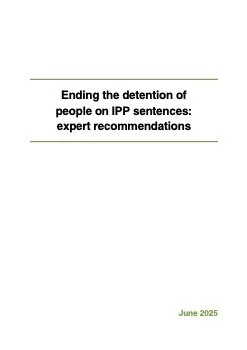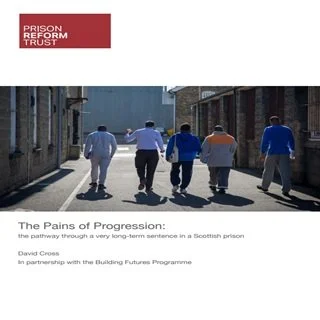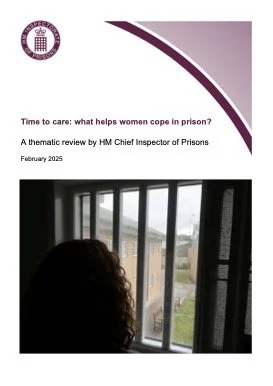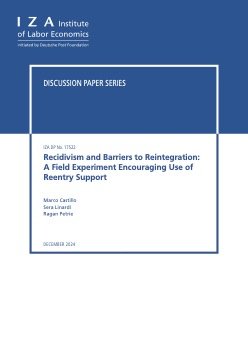By Julia Burchett, Anne Weyembergh, Marta Ramat (English)
Background Prisons and life inside prisons are often kept out of the public’s sight. Nonetheless, the persistent shortcomings affecting European prisons have gained the ever increasing attention of the European Court of Human Rights and, subsequently, of the Court of Justice of the European Union. In particular, the persistent degrading prison conditions in many EU Member States have recently shown their relevance for the EU legal order. Indeed, not only are they in breach of the rights guaranteed by the EU Charter of Fundamental Rights, but they also proved a serious obstacle to the smooth functioning of mutual recognition, the cornerstone of judicial cooperation in criminal matters. After numerous calls to action by the European Parliament, on 8 December 2022 the European Commission launched the first instrument laying down common minimum (although non-binding) standards in the field of material detention conditions. The pressing fundamental rights concerns stemming from degrading prison conditions, their detrimental effects on mutual recognition and the recent adoption of an EU Recommendation make the issue of prison conditions particularly topical and worth examining from an EU-law perspective. Aim This study aims to provide the European Parliament with background information and policy recommendations concerning prisons and detention conditions in the European Union, on the basis of European and national regulations, legislation, policies and practices. It should provide a picture of the situation in the EU, based on a range of relevant sources, and assess the initiatives taken at EU level to support effective compliance with existing European standards. The result of this research should bring forth policy inputs and options for the future direction of the EU’s work in this field. Key findings From the first pages, the study attempts to provide an overview of the wide range of problems faced by Member States in relation to detention conditions. In this regard, it became clear during the course of the study that this latter notion should be understood in a broad way, including material detention conditions stricto sensu but also other related issues having a significantimpact on life in detention (e.g. the excessive use and length of pre-trial detention). While this research has identified particularly acute problems affecting many EU countries, this should not overshadow the wide range of issues identified at EU level, the severity of which varies from country to country. As it was not possible to carry out a comprehensive review of all detention issues, the study then focused in depth on two key issues that have gained importance at EU level, namely prison overcrowding and prison radicalisation. Although the scale of the phenomenon of prison overcrowding is widely reported, the lack of common measurement indicators has been identified as an important gap which does not allow for accurate cross-national comparison With regard to prison radicalisation, which is a relatively new issue compared to prison overcrowding, the study found that the challenges posed by radicalisation in prison are receiving considerable attention at EU level. Among the important concerns highlighted by the study are the specific (and usually more restrictive) conditions of detention that apply to this category of detainees. This issue has caught the attention of prison oversight bodies both at European and national levels in view of their potential impact on fundamental rights and has become highly visible in some Member States as illustrated by the case of Belgium and France. Shifting the focus on the cross-border context, the study has sought to assess the concrete impact of poor detention conditions on several mutual recognition instruments involving a deprivation of liberty measure, namely the Framework Decision 2002/584/JHA on the European arrest warrant and the Framework Decision 2008/909 on the transfer of prisoners. In this respect, it was found that considerations of detention conditions do not come into play in the same way in these two instruments. By way of comparison, while the Framework Decision on the transfer of prisoner has led to a very limited body of case-law, the tensions between the principle of mutual recognition and the lack of mutual trust in the detention conditions have become particularly conspicuous in several major preliminary rulings involving the use of the EAW. Moreover, research has shown a greater alignment between the case law of the CJEU and the ECtHR when the issue of prison conditions arises in EAW cases. This is considered beneficial to ensure coherence between the legal systems of the EU and the CoE, but also to avoid messy and inconsistent (non) application of EU law as a result of conflicting obligations deriving from the two jurisdictions. Regarding the concrete implications of the CJEU case-law, the study found that the Court’s jurisprudence had an undeniable effect on EAW proceedings with a varying impact on the practice of national authorities, whether in terms of impact on mutual trust or in terms of the parameters used to assess the real risk of inhuman or degrading treatment resulting from detention conditions in the issuing Member State. While some experts assert that the CJEU’s case-law tends to be increasingly assimilated by practitioners and that many countries develop practices compliant with the Court’s requirements, several remaining difficulties were pinpointed. In addition, despite the fact that many tools are available to help practitioners interpret and apply the case-law of the CJEU, the study identified several areas where EU support could be improved. Among the key findings of the study, it is worth noting the lack of effective implementation of international and European standards governing crucial aspects of detention conditions (e.g. cell-space, access to health care, sanitary conditions, prison monitoring, etc.). This was highlighted in several parts of the study and is widely corroborated by empirical research, by the reports of European and national prison monitoring bodies, but also by the judgments of the ECtHR. Although matters of detention are the responsibility of Member States (in addition to the fact that many standards on prison conditions exist through the CoE and the ECtHR),there seems to be a broad consensus on the need for EU action to secure a higher degree of compliance with these standards. In this respect, the study identified the recent European Commission’s Recommendation ‘on procedural rights of suspects and accused persons subject to pre-trial detention and on material detention conditions’ as a step forward, as it is the first EU instrument (although non-binding) laying down common minimum standards in the two areas concerned. However, its concrete impact remains difficult to gauge and only time will tell if this Recommendation leads to a more effective and convergent application of European standards. The study has also identified several advantages in considering the adoption of EU minimum standards through a legislative instrument. For the sake of completeness, the analysis was extended to alternative measures to detention which, although not intrinsically related to detention conditions, are advocated as an important lever to regulate the flow of incarceration. In a purely domestic context, the study highlighted the wide variety of legal cultures and practices that coexist at EU level as regards both alternatives to pretrial and post-trial detention. Several good practices and possible hurdles to their use were identified. As a general observation, the study found that, although an essential lever for reducing the use of imprisonment, alternative measures are not sufficient on their own to tackle the problem of poor conditions of detention. In order to produce effective results, alternative measures must be accompanied by coherent penal policies, taking into consideration all relevant criminal law measures that have an impact on the flow of imprisonment. In a cross-border context, the study identified a general lack of awareness of several mutual recognition instruments that could be used as alternatives to the EAW to avoid an unnecessary deprivation of liberty measure, namely the Framework Decision 2009/829/JHA (on the European Supervision Order), the Framework Decision 2008/947/JHA (on probation measures and alternative sanctions) and the Directive 2014/41/EU (on the European Investigation Order). The lack of knowledge about these instruments is widely recognized by scholars, and concern not only judges and prosecutors, but also defence lawyers.
European Parliament, Policy Department for Citizens’ Rights and Constitutional Affairs Directorate-General for Internal Policies, 2023. 122p.





















